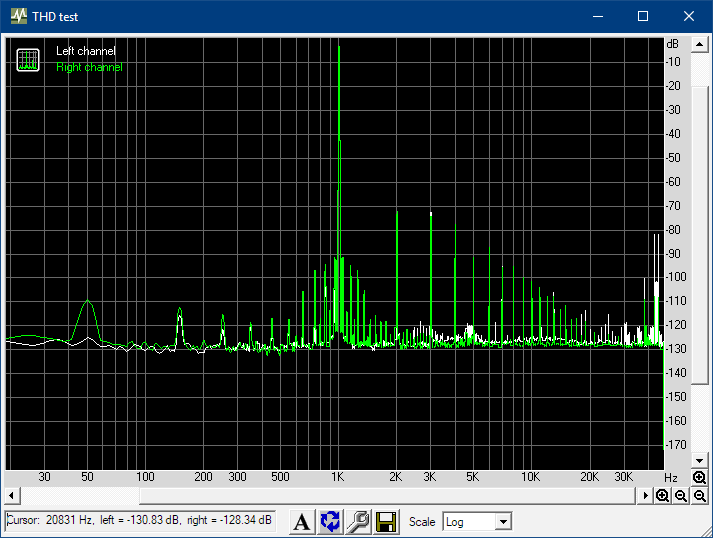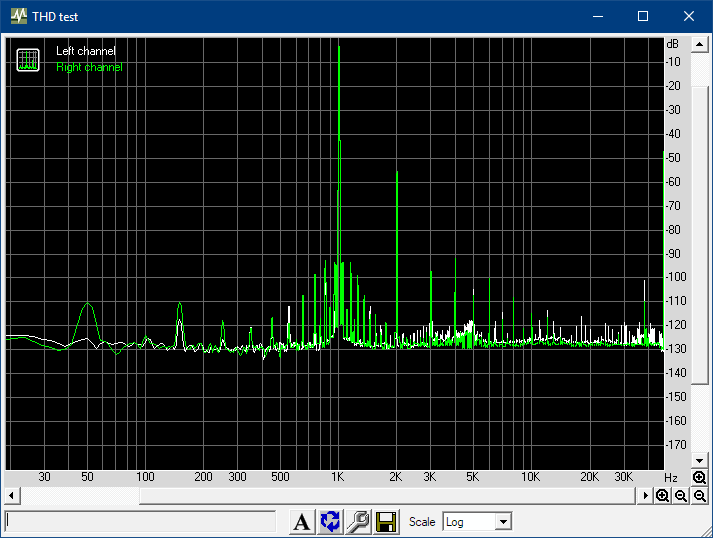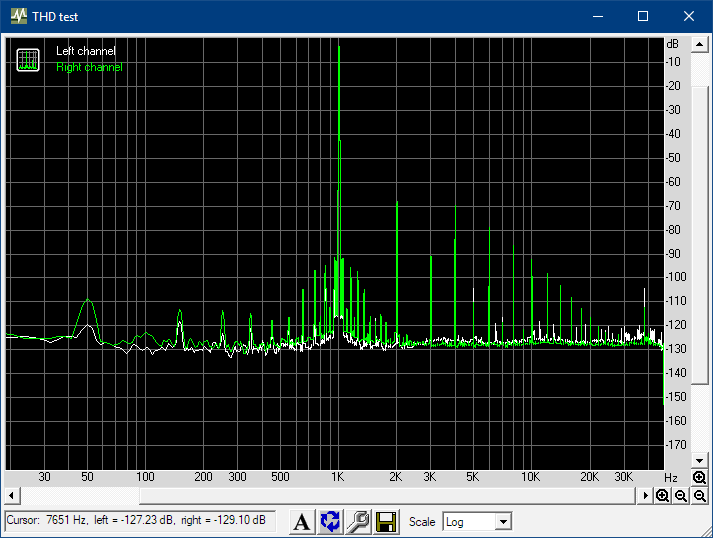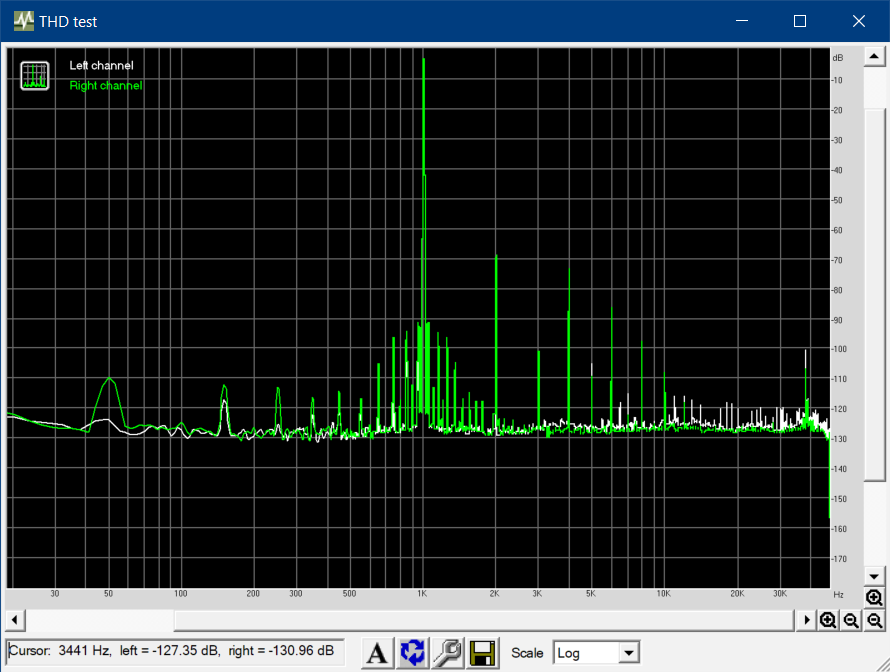Kingston
Well-known member
Hello,
I'm playing with Behringer MDX2600 compressor (schematic here https://groupdiy.com/index.php?topic=44991.msg564977#msg564977). The original has a THAT2159 VCA clone by the brand of cool audio ie. Behringer. It has too much distortion even when optimally trimmed. I changed it to THAT2180A (factory pre-trimmed) and removed the trim and its scaffolding completely.
Here are the THD specs before and after.
Cool audio "THAT2159", 1khz THD 0.048%

THAT2180A, 1khz THD 0.179%

I managed to clear most crap above the 2nd order distortion. But now 2nd order distortion dominates and is way too high. I have used THAT2180A in GSSL variants and with DBX166 modding and it usually performs with something like THD 0.01%.
The biggest difference I can see comparing MDX2600 to GSSL or DBX166 is that input resistor to the VCA is way lower in MDX2600 (R17/R28). Can I fix the distortion simply by changing this to a way higher value - to something like 27K of GSSL?
(I of course need to compensate this with the post-VCA opamp stage)
THAT2180A datasheet also talks about this resistor as a trade-off between noise and THD.
http://www.thatcorp.com/datashts/THAT_2180-Series_Datasheet.pdf
I'm playing with Behringer MDX2600 compressor (schematic here https://groupdiy.com/index.php?topic=44991.msg564977#msg564977). The original has a THAT2159 VCA clone by the brand of cool audio ie. Behringer. It has too much distortion even when optimally trimmed. I changed it to THAT2180A (factory pre-trimmed) and removed the trim and its scaffolding completely.
Here are the THD specs before and after.
Cool audio "THAT2159", 1khz THD 0.048%

THAT2180A, 1khz THD 0.179%

I managed to clear most crap above the 2nd order distortion. But now 2nd order distortion dominates and is way too high. I have used THAT2180A in GSSL variants and with DBX166 modding and it usually performs with something like THD 0.01%.
The biggest difference I can see comparing MDX2600 to GSSL or DBX166 is that input resistor to the VCA is way lower in MDX2600 (R17/R28). Can I fix the distortion simply by changing this to a way higher value - to something like 27K of GSSL?
(I of course need to compensate this with the post-VCA opamp stage)
THAT2180A datasheet also talks about this resistor as a trade-off between noise and THD.
http://www.thatcorp.com/datashts/THAT_2180-Series_Datasheet.pdf






![Soldering Iron Kit, 120W LED Digital Advanced Solder Iron Soldering Gun kit, 110V Welding Tools, Smart Temperature Control [356℉-932℉], Extra 5pcs Tips, Auto Sleep, Temp Calibration, Orange](https://m.media-amazon.com/images/I/51sFKu9SdeL._SL500_.jpg)





























